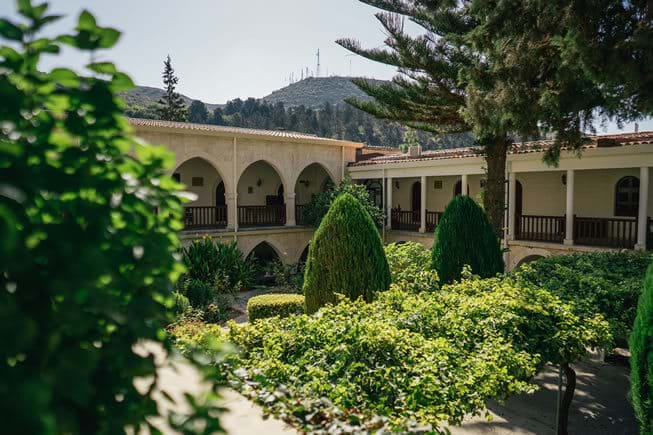In the Middle Ages, Pafos was a much quieter place than it is now—so much so that a Christian named Neofytos could live in peace and solitude in a hermitage just nine kilometres northwest of what is now the town centre. You can visit the Agios Neofytos Monastery to see his original settlement along with the complex that bears his name. The oldest part of the monastery is the Enkleistra, the set of three connected cells he dug into the limestone cliffside in the 12th century. Neofytos carved domed spaces as well as their furnishings—you can see benches, bookshelves, a desk, and his sarcophagus. The walls and ceilings display scenes from the final days of Christ, such as the Last Supper and the Ascension, that represent some of the finest examples of wall painting from the Byzantine era. Neofytos was a prolific author of theological texts; the surviving Greek manuscripts are housed in the library at the monastery. Though Neofytos spent his first eleven years here in seclusion, he was encouraged to take on students and established a cloister at the site. Over the centuries, the complex has seen a series of constructions and renovations. The main church includes notable post-Byzantine icons from the 16th century. Next to it is a museum displaying manuscripts, icons, ecclesiastical garments, and other artefacts. An active monastery, the complex includes a peaceful garden on a wooded perch overlooking the Pafos coast. It remains a suitable place for contemplation.
